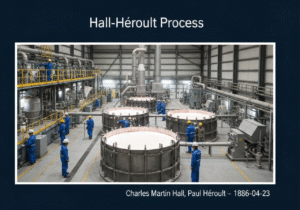A Lean tool that documents the current best, safest, and most efficient method for performing a specific task or process, ensuring consistency and providing a baseline for improvement.
- Methodologies: Project Management
Standard Work

Standard Work
- Continuous Improvement, Efficiency, Kaizen, Lean Manufacturing, Process Improvement, Quality Management, Training, Waste Reduction
Objective:
How it’s used:
- Involves clearly defining the precise sequence of actions, timing (takt time, cycle time), work-in-process, and expected output for a job. This is typically documented and displayed at the workstation, and used for training and auditing.
Pros
- Ensures consistency and reduces variability in processes; Improves quality and safety; Provides a baseline for Kaizen (continuous improvement); Facilitates training and onboarding of new employees.
Cons
- Can be perceived as rigid if not implemented with employee involvement; Requires effort to develop and maintain, especially if processes change frequently; May stifle creativity if not balanced with improvement initiatives.
Categories:
- Ergonomics, Lean Sigma, Manufacturing, Quality
Best for:
- Ensuring tasks are performed consistently, safely, and efficiently, particularly in repetitive manufacturing or service operations.
Standard Work methodology plays a significant role in several sectors, particularly within manufacturing environments such as automotive and electronics, where repetitive tasks are common. This approach is frequently implemented during the process design phase, where teams assess workflows to maximize efficiency before full-scale production begins. Key participants in this methodology typically include production engineers, quality assurance teams, and training personnel, who collaboratively develop standard work documents that serve as references at each workstation. These documents outline every step of the process, define specific timing requirements, and detail necessary tools and materials, thereby establishing a clear operational framework. Industries such as healthcare also benefit from Standard Work, particularly in patient care procedures where consistency and safety are paramount. The availability of documented processes aids in regulatory compliance and can significantly enhance training programs for new staff, while also supporting mentorship strategies for experienced employees guiding newcomers. By offering a baseline for continuous improvement initiatives like Kaizen, organizations can implement small, incremental changes over time, leading to substantial gains in productivity and employee satisfaction as workers become more engaged with clearly defined roles. Furthermore, the visibility of Standard Work documentation encourages accountability and promotes a culture of quality and safety, reducing the likelihood of errors or accidents in fast-paced environments.
Key steps of this methodology
- Document the standard process flow for the task.
- Define the specific actions required for each step.
- Establish takt time and cycle time for efficiency.
- Identify work-in-process stages and manage inventory levels.
- Set the expected output metrics for quality control.
- Display the standard work documentation at the workstation.
- Train employees using the documented standard work procedures.
- Conduct audits to ensure compliance with the standard.
Pro Tips
- Regularly review and update Standard Work documentation to reflect any process changes or improvements based on real-world data.
- Incorporate feedback mechanisms from operators directly involved in tasks to identify pain points and enhance accuracy of Standard Work.
- Utilize visual management techniques at workstations to reinforce best practices and improve adherence to Standard Work protocols.
To read and compare several methodologies, we recommend the
> Extensive Methodologies Repository <
together with the 400+ other methodologies.
Your comments on this methodology or additional info are welcome on the comment section below ↓ , so as any engineering-related ideas or links.
Historical Context
1850
1890
1924
1930
1940
1950
1950
1958
1886-04-23
1897
1930
1940
1949
1950
1950
(if date is unknown or not relevant, e.g. "fluid mechanics", a rounded estimation of its notable emergence is provided)















Related Posts
Musculoskeletal Discomfort Questionnaires
Multivariate Testing (MVT)
Multiple Regression Analysis
Motion Capture Systems
MoSCoW Method
Mood’s Median Test